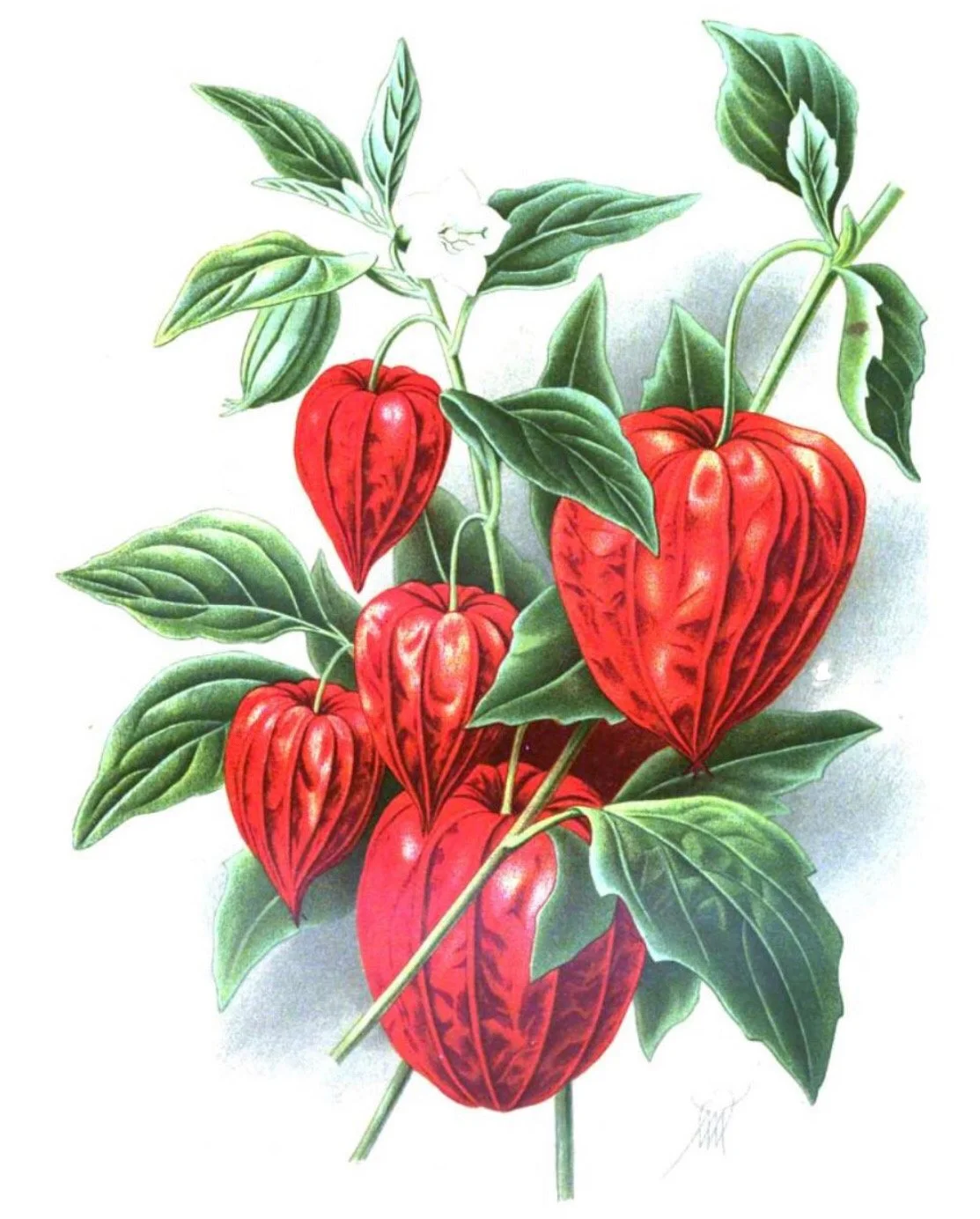Chinese Lantern 'Gigantea'
Chinese Lantern 'Gigantea'
CHINESE LANTERN 'GIGANTEA'
Physalis alkekengi var. franchetii ‘Gigantea'
ORGANIC
An impressive selection of this peculiar Asian nightshade, one that is ideal for floral material. Plants are fairly similar in appearance to our native ground cherries and goldenberries, but the small red fruits of this Physalis species feature a big bright orange papery husk (technically an inflated calyx). These are produced along long strong stems, and the stunning calyxes hold for months, even years, when stems are carefully cut and dried. Perfect for dramatic everlasting bouquets. Challenging to transport, making them difficult to find at market. Grow your own!
Unlike our native Physalis, this species is a hardy perennial with spreading stoloniferous roots. In some gardens they become a pest, popping up in places you'd rather not have them. Removing unwanted plants involves excavating extensive root systems, especially in rich garden soils. This variety is less invasive than the species proper, spreading politely where it is happy and very little indeed in poor dry soils. A good strategy for flower farmers to keep its spread in check it is to grow it in poor and sharply drained soils along irrigation lines. In this context it will rarely venture beyond a regular source of moisture.
Start indoors: tuck seeds just beneath the surface of moist soil, pressing to keep seeds snug. Mist generously and cover with plastic to maintain moisture. These seeds typically germinate best with some light stratification, but we find that they germinate well for us over two to four weeks under bright lights at around 60°F during the day, and a bit colder at night. In winter, warm grow lights on a timer in an unheated room of the house accomplish this easily. Or you might pot them up and refrigerate them for a month or so before returning to room temperature under bright lights. Either way should successfully germinate most of these seeds.
Once seedlings have true leaves, prick them out to grow on in individual 3" pots at room temperature in bright light. These plants are slower to grow than our common Physalis species, putting most of their energy into root production in the first year. They will rarely bloom before their second year. Pot up into successively larger containers as necessary to prevent the plants becoming too rootbound before transplanting outdoors, either in spring or autumn. These plants are tough indeed, and hardy to at least zone 3. They will take a lot of abuse both in the pot and in the ground, even when their tops appear small and ragged.
Mature plants will grow to around 3'. Calyxes start off green and mature to orange, sometimes slowly. When calyxes are fully orange, stems may be cut at the ground. If left in the garden too long in autumn the calyxes will become skeletonized, so do not delay. Strip the leaves from the stems manually or place stems in buckets of water in a dark room to defoliate naturally before drying upright in a cool and dry space with good air circulation. Avoid bright sunlight to maintain calyx color. We prefer to display these stems on their own, but they are also nice with the equally dramatic seed pods of Lunaria annua.
Though some sources suggest that the fruit of this species is edible and/or medicinal, we do not recommend consuming it for any reason except to exercise curiosity. The flavor is sour, often bitter, and effectively astringent. Quite unpleasant. Some selections of the species are sweeter, but this is not one of them. In TCM the roots of this species are sometimes used, but again, we cannot recommend this.
Packet contains at least 15 seeds.
